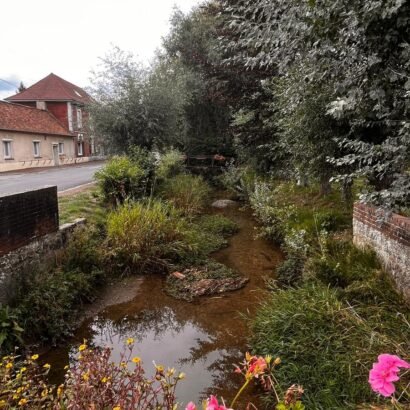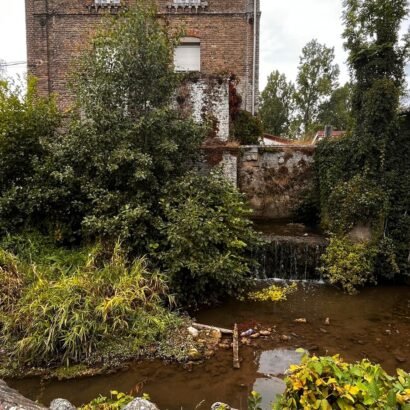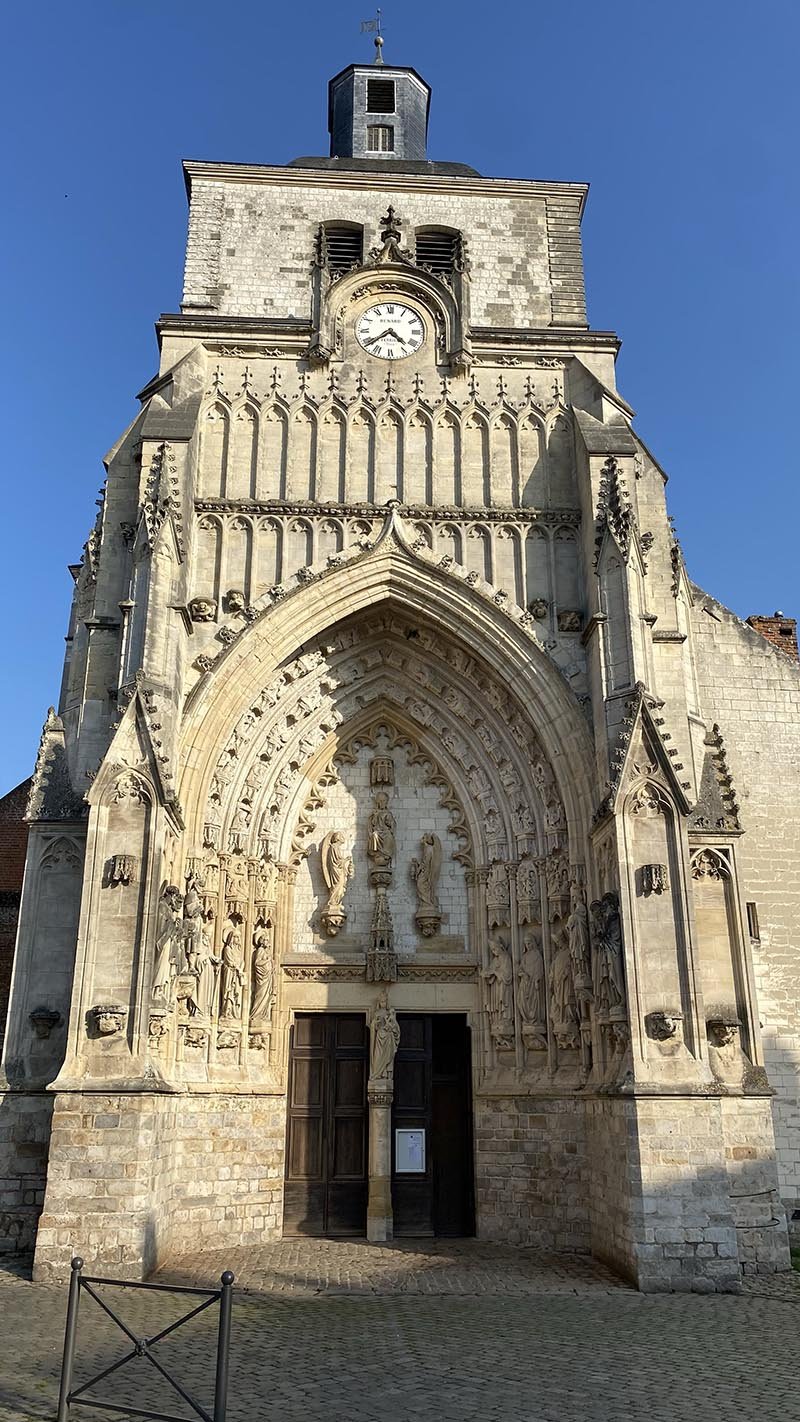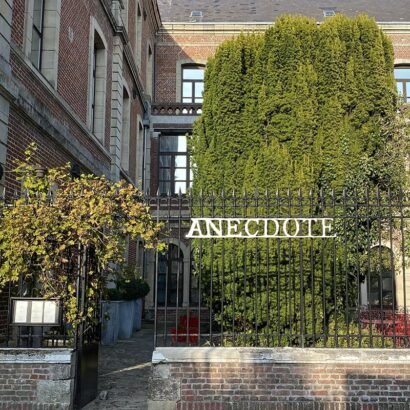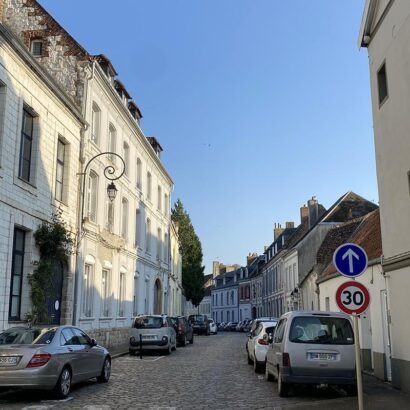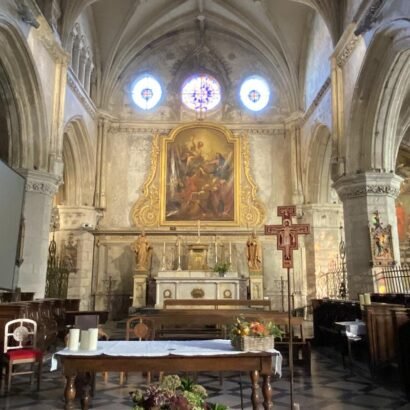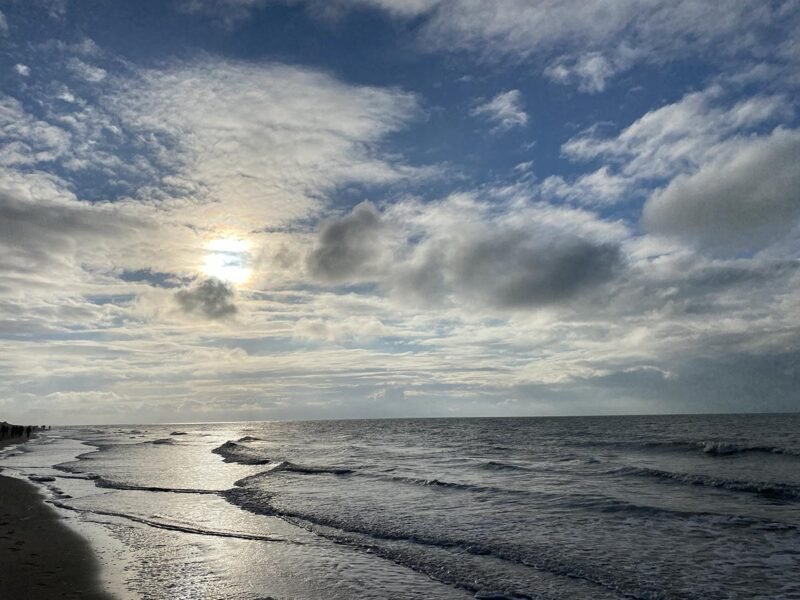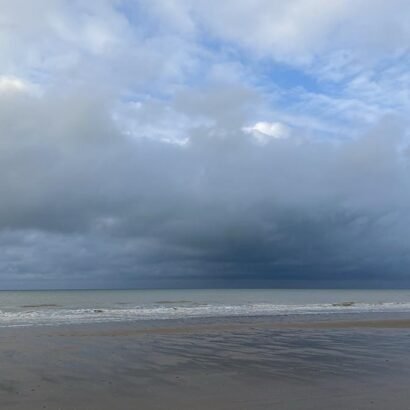
Area attractions
Aix-en-Issart
Established along the Bras de Bronne river, one of the Canche river branches, this quaint hamlet of 300 souls is one out of the ten villages of Ternois and the seven valleys. Endowed with a touching medieval charm, standing right in the middle of a rural scenery, it features numerous attractions: the Saint-Pierre Romanesque church (11th century), old farmhouses, buildings made of clay, hiking trails and festivities such as bowling tournaments or folk song and music shows (last weekend of July).
Nature lovers, History connoisseurs and things-you-have-never-seen-before fans will come across many more treasures if they dare to wander more widely.
The Ternois and the seven valleys were shaped up through centuries by passing time, History in the making and of course its inhabitants’ actions impact. Castles, windmills, churches and abbeys, protected natural areas and orchards or vegetable gardens are scattered all over to be explored and stir awe.
Fresh water is another wonder wanting for attention: it is everywhere! It threads its way from valleys to valleys, leaks out along hedges, slips under bridges, supplies ponds and wetlands, wets groves. No less than seven rivers are frolicking –Authie, Canche, Ternoise, Planquette, Créquoise, Bras de Bronne and Lys- some of them being among the most fish-bearing of the county. A most interesting piece of information for fishermen.
Adventurous travelers will cruise on canoes and paddles or take a dip from artificial beaches in water and leisure parks.
If you wander further away still, on the way to Montreuil-sur-Mer, you will come across yet another wonder and fall under its spell. The Chartreuse de Neuville indeed displays the authentic charm of its old stones for more than 700 years.
We’ll have you know that it was first built out of spite because the Christ’s face imprint on Sainte Veronique’s veil turned away three times to avoid the Count Boulogne’s gaze. The latter then decided to redeem himself with an architectural gesture. The Chartreuse de Neuville rose out of the ground. It first became a monastery that sheltered the printing-press of the Carthusian order, then a cultural phalanstery, then a hospital for Belgium civilians during the First World War, then both an asylum and a nursing home and, eventually, the congregation of the Bethlehem Sisters community.
Nowadays, the Chartreuse de Neuville is a non-profit foundation that promotes resources and commitment. Its mission includes the creation of cultural and intellectual experiences or entrepreneurial activities in the fields of innovation, education and socio-professional integration. It also supports many hybrid projects. Exhibitions, sightseeing tours and workshops are available to visit this talent-making factory.
Montreuil-sur-Mer
Elected second favorite village of France in 2016, Montreuil-sur-Mer is also designated Town in Bloom and labeled Station Verte (natural tourist area). It’s a must-see destination with many flavors to it. Seaport, medieval fortified site and both a commercial and cultural hub, this one-thousand-year old city witnessed many chapters of the local troubled History. Its architectural heritage both military and religious that goes back to medieval times is proof enough. To this day, it remains untouched and stands as a great place to visit.
Victor Hugo made no mistake about that and wrote his famous novel Les Misérables based on its stay within its walls. One of the characters in the book, Fantine, is even said to have been born in the very town. A fact that this now famous home town doesn’t fail to celebrate each summer with a Sound and Light show.
Why not then fall into step with the writer… Strolling around the well-preserved picturesque cobblestone streets, contemplating half-timbered houses such as the so called “du pot d’étain” the oldest building that withstood Charles Quint’s attack in 1537, and gazing at 18th century town houses built between backyards and busy streets. Around forty of those remain that Victor Hugo compared to a smaller version of the Parisian Saint Germain Faubourg.
The sightseeing tour that takes you around the 3-kilometer-long fortress walls is worth it as well. You won’t fail to notice the numerous military landmarks such as the citadel, the strongholds and the German underground passageway and concrete block houses.
A quick tour of the Roger-Rodière Museum of Art and History will perfect your knowledge on the matter and if you are fond of Western religious art, you must end your stay with a visit to Saint Saulve abbey church and to the Hotel Dieu Chapel.
Please note that a major network of hiking trails links Montreuil with its surrounding, among which the Great Hiking Path 121 (GR 121) that connects Wavre in Belgium to Boulogne-sur-Mer.
And last but not least, families with fun-loving children will be glad to learn that not very far off Montreuil-sur-Mer stands the amusement park called Bagatelle. An interesting mix of vintage and modernity, it’s the oldest French fairground (1955) located in the town of Rang-du-Fliers.
The shimmering light bathing the Opal coast features the same sparkling hints radiated by the opal stone whose etymology means “one that changes color” as a rainbow would. Hence the name. The seaside resort Touquet-Paris-Plage lounging right in the middle of the 72-kilometers-long seafront thus became “The Opal Coast pearl”.
Down south, two magnificent bays stretch out one after another. The Somme Bay first, classified Great Site of France, where incredible color variations, huge skies and magical lights showcase the antics of seals and migratory birds. The Authie Bay then, natural boundary that separates the Somme and the Pas-de-Calais counties, an incredible site also known for its massive stretch of sand dunes and its sea-lavender that coats the mollières (salt marsh grasses in Picard language). This particular scenery displaying delicate mauve hues can be observed from July to October.
Overall, the landscape patchwork is captivating. It mixes all together the sand golden tint with the bluish white of the rounded pebbles, with the scenic look of the colorful harbors and the cliffs staggering architecture.
To ensure you won’t miss anything, we strongly suggest to explore each and every single one of those hot spots between the villages of Camiers and Ault. Make sure to stop by Touquet-Paris-Plage, Stella-Plage, Merlimont, Berck-sur-Mer, Fort-Mahon Plage, Le Crotoy, Saint-Valéry-sur-Somme, the Hourdel peak and Cayeux-sur-Mer. Those must-do locations unlatch pure feelings of rapture and elation.
As to thrill seekers, they will enjoy watching the famous motorcycle race Enduropale that takes place at the beginning of the year on the beaches of Touquet, Stella-Plage and Merlimont. Bikers from all over the world drive the dunes on a three-hour crazy ride full of challenges set up to make it even more spectacular. This event was created by famous French rally driver Thierry Sabine in 1975 and is now part of the France sand races Championship.
Documentary source: www.valleesdopale.com/fr
- Inland
Aix-en-Issart
Established along the Bras de Bronne river, one of the Canche river branches, this quaint hamlet of 300 souls is one out of the ten villages of Ternois and the seven valleys. Endowed with a touching medieval charm, standing right in the middle of a rural scenery, it features numerous attractions: the Saint-Pierre Romanesque church (11th century), old farmhouses, buildings made of clay, hiking trails and festivities such as bowling tournaments or folk song and music shows (last weekend of July).Nature lovers, History connoisseurs and things-you-have-never-seen-before fans will come across many more treasures if they dare to wander more widely.
The Ternois and the seven valleys were shaped up through centuries by passing time, History in the making and of course its inhabitants’ actions impact. Castles, windmills, churches and abbeys, protected natural areas and orchards or vegetable gardens are scattered all over to be explored and stir awe.
Fresh water is another wonder wanting for attention: it is everywhere! It threads its way from valleys to valleys, leaks out along hedges, slips under bridges, supplies ponds and wetlands, wets groves. No less than seven rivers are frolicking –Authie, Canche, Ternoise, Planquette, Créquoise, Bras de Bronne and Lys- some of them being among the most fish-bearing of the county. A most interesting piece of information for fishermen.
Adventurous travelers will cruise on canoes and paddles or take a dip from artificial beaches in water and leisure parks.
If you wander further away still, on the way to Montreuil-sur-Mer, you will come across yet another wonder and fall under its spell. The Chartreuse de Neuville indeed displays the authentic charm of its old stones for more than 700 years.
We’ll have you know that it was first built out of spite because the Christ’s face imprint on Sainte Veronique’s veil turned away three times to avoid the Count Boulogne’s gaze. The latter then decided to redeem himself with an architectural gesture. The Chartreuse de Neuville rose out of the ground. It first became a monastery that sheltered the printing-press of the Carthusian order, then a cultural phalanstery, then a hospital for Belgium civilians during the First World War, then both an asylum and a nursing home and, eventually, the congregation of the Bethlehem Sisters community.
Nowadays, the Chartreuse de Neuville is a non-profit foundation that promotes resources and commitment. Its mission includes the creation of cultural and intellectual experiences or entrepreneurial activities in the fields of innovation, education and socio-professional integration. It also supports many hybrid projects. Exhibitions, sightseeing tours and workshops are available to visit this talent-making factory.
Montreuil-sur-Mer
Elected second favorite village of France in 2016, Montreuil-sur-Mer is also designated Town in Bloom and labeled Station Verte (natural tourist area). It’s a must-see destination with many flavors to it. Seaport, medieval fortified site and both a commercial and cultural hub, this one-thousand-year old city witnessed many chapters of the local troubled History. Its architectural heritage both military and religious that goes back to medieval times is proof enough. To this day, it remains untouched and stands as a great place to visit.
Victor Hugo made no mistake about that and wrote his famous novel Les Misérables based on its stay within its walls. One of the characters in the book, Fantine, is even said to have been born in the very town. A fact that this now famous home town doesn’t fail to celebrate each summer with a Sound and Light show.
Why not then fall into step with the writer… Strolling around the well-preserved picturesque cobblestone streets, contemplating half-timbered houses such as the so called “du pot d’étain” the oldest building that withstood Charles Quint’s attack in 1537, and gazing at 18th century town houses built between backyards and busy streets. Around forty of those remain that Victor Hugo compared to a smaller version of the Parisian Saint Germain Faubourg.
The sightseeing tour that takes you around the 3-kilometer-long fortress walls is worth it as well. You won’t fail to notice the numerous military landmarks such as the citadel, the strongholds and the German underground passageway and concrete block houses.
A quick tour of the Roger-Rodière Museum of Art and History will perfect your knowledge on the matter and if you are fond of Western religious art, you must end your stay with a visit to Saint Saulve abbey church and to the Hotel Dieu Chapel.
Please note that a major network of hiking trails links Montreuil with its surrounding, among which the Great Hiking Path 121 (GR 121) that connects Wavre in Belgium to Boulogne-sur-Mer.
And last but not least, families with fun-loving children will be glad to learn that not very far off Montreuil-sur-Mer stands the amusement park called Bagatelle. An interesting mix of vintage and modernity, it’s the oldest French fairground (1955) located in the town of Rang-du-Fliers.
- On the sea side
The shimmering light bathing the Opal coast features the same sparkling hints radiated by the opal stone whose etymology means “one that changes color” as a rainbow would. Hence the name. The seaside resort Touquet-Paris-Plage lounging right in the middle of the 72-kilometers-long seafront thus became “The Opal Coast pearl”.
Down south, two magnificent bays stretch out one after another. The Somme Bay first, classified Great Site of France, where incredible color variations, huge skies and magical lights showcase the antics of seals and migratory birds. The Authie Bay then, natural boundary that separates the Somme and the Pas-de-Calais counties, an incredible site also known for its massive stretch of sand dunes and its sea-lavender that coats the mollières (salt marsh grasses in Picard language). This particular scenery displaying delicate mauve hues can be observed from July to October.
Overall, the landscape patchwork is captivating. It mixes all together the sand golden tint with the bluish white of the rounded pebbles, with the scenic look of the colorful harbors and the cliffs staggering architecture.
To ensure you won’t miss anything, we strongly suggest to explore each and every single one of those hot spots between the villages of Camiers and Ault. Make sure to stop by Touquet-Paris-Plage, Stella-Plage, Merlimont, Berck-sur-Mer, Fort-Mahon Plage, Le Crotoy, Saint-Valéry-sur-Somme, the Hourdel peak and Cayeux-sur-Mer. Those must-do locations unlatch pure feelings of rapture and elation.
As to thrill seekers, they will enjoy watching the famous motorcycle race Enduropale that takes place at the beginning of the year on the beaches of Touquet, Stella-Plage and Merlimont. Bikers from all over the world drive the dunes on a three-hour crazy ride full of challenges set up to make it even more spectacular. This event was created by famous French rally driver Thierry Sabine in 1975 and is now part of the France sand races Championship.
Documentary source: www.valleesdopale.com/fr


